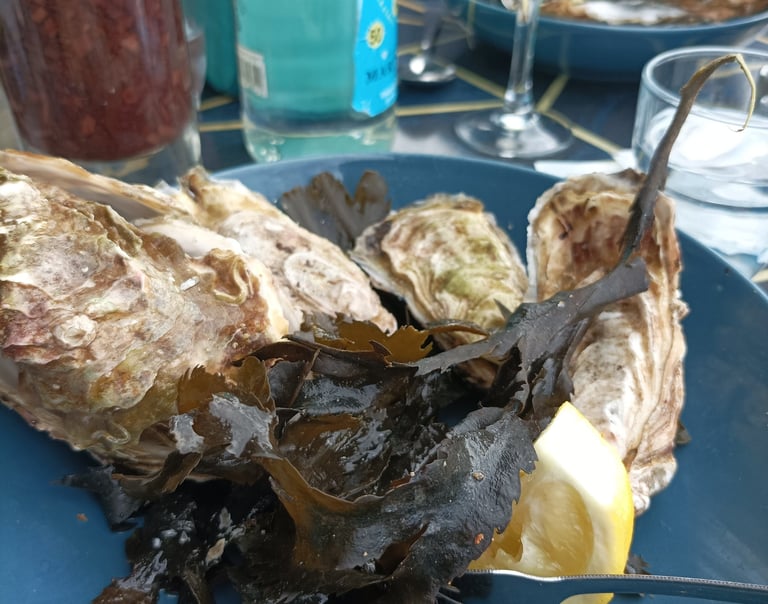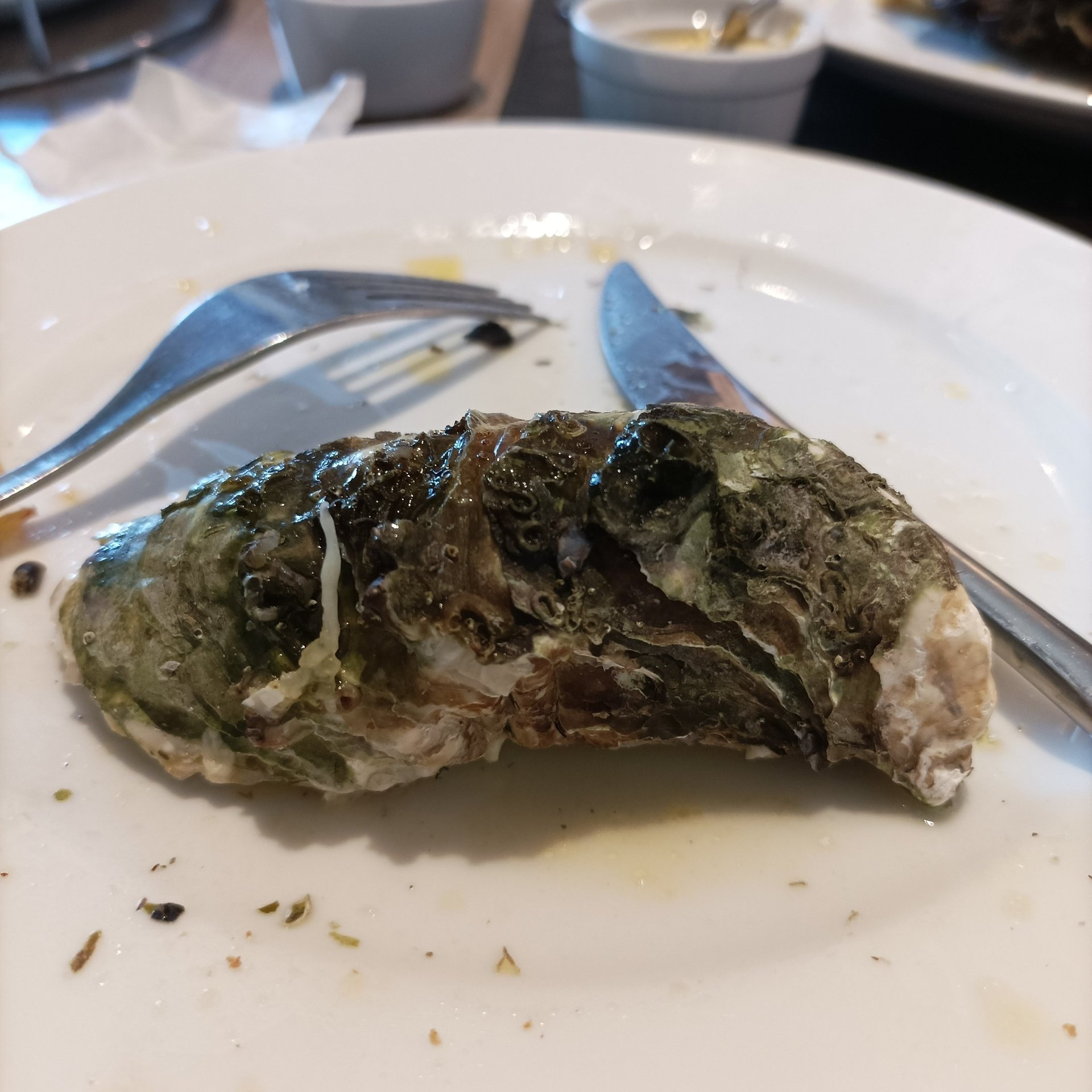
From Bouzigues or Cancale?
How do you like your oysters?
Joan
4/24/20244 min read
When we first came to live in France I neither liked oysters, nor knew anything about them. But one can't live in this area for long without becoming enthusiastic about this salty crustacean. Once the food of the poor in Britain, oysters are now an expensive luxury over there. But not in France where they are highly affordable, and traditionally bought in large wooden boxes for Christmas and New Year festivities. Moreover , if you should head for the Etang de Thau , particularly on a Sunday, you will see that French people flock to eat oysters as a special treat. Indeed, most French people will have their favourite variety of oyster , whether it be from the Etang de Thau, Arcachon in the west, or Cancale on the coast of Brittany. Every oyster has its own particular flavour apparently. They are usually swallowed raw, with a squeeze of lemon juice, or red wine and chopped shallots. Be sure to avoid being given this mixture in a bottle with a narrow funnel however! The wine soaked shallots are an integral part of the experience. Another favourite of mine are oysters gratinées. In our region the oyster is schucked, gently eased from its shell, replaced on a layer of buttery leeks, and then coated in cheese and grilled briefly. Heaven! Last week I discovered a pond of garlicky butter mixed with oyster juices in the bottom of my shells...perhaps even better!


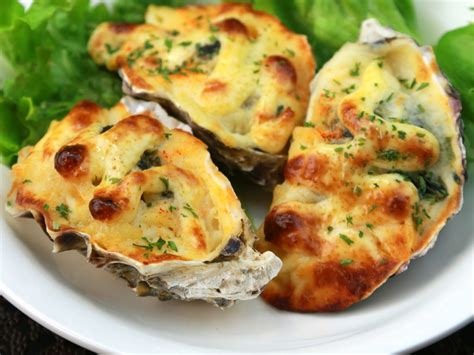

Huitres creuses..
....Huitres gratinées ?
or
Oyster Production.
Having spent many hours boating, and cycling around the Etang de Thau, we have become very familiar with the local method of production. Large wooden platforms follow the shore line along the north side of the étang , from which ropes are suspended into the water. Each rope has a number of tiny oysters cemented to it. When they have grown large enough, they are harvested by dedicated flat bottomed boats which pass between the tables, and are then taken to one of the many small oyster production enterprises, large wooden huts which line the bay. Here they are placed onto conveyor belts, sorted and stored in deep salt water tanks. Christmas is one of the busiest production times, and harvesting takes place throughout December. Perhaps the most wonderful thing about this industry is that enterprises are generally small and locally owned. Eating oysters in Bouzigues is about as far removed from buying a Macdonalds burger, as you can possibly imagine. And absolutely the place to eat them is the little port of Bouzigues, with its numerous restaurants strung out along the shore.
Bouzigues...
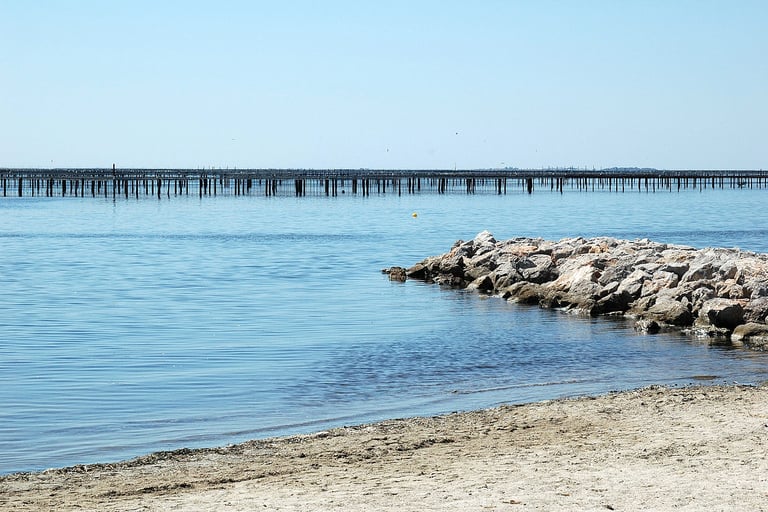

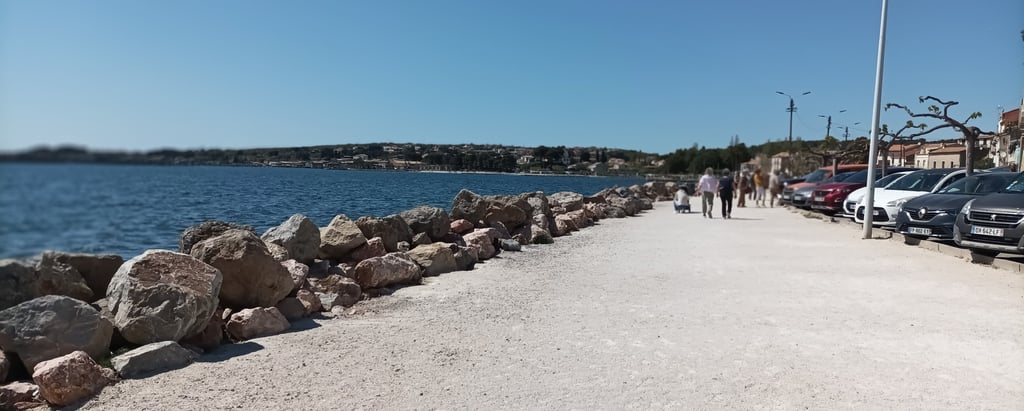

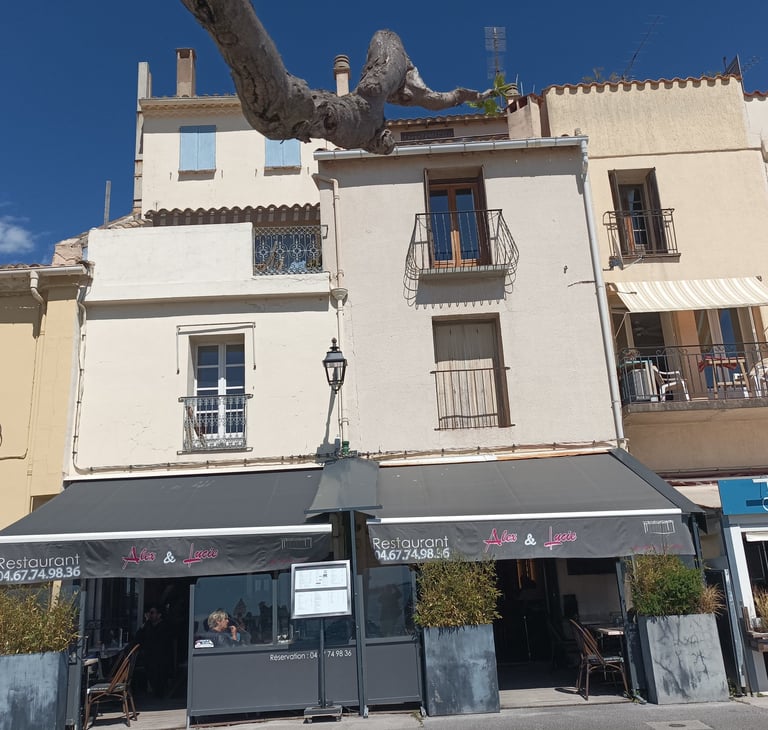

Bouzigues
Cancale
But , if we thought that we knew everything there was to know about oyster production, a recent visit to the north of France proved us wrong. We had returned to France on the ferry from England to St Malo, and decided to explore the nearby seaside town of Cancale, which is also famous for oysters. Cancale is situated on a large bay . The tide was in, and across the water we could see the iconic shape of Mont St Michel. But there was not a single oyster table to be seen. For sure there were lots of restaurants advertising oysters as well as an oyster market , where local producers offered us plates of fresh oysters to eat as we gaze at the sea. The tradition is to throw your empty shells onto the beach below you after each one.

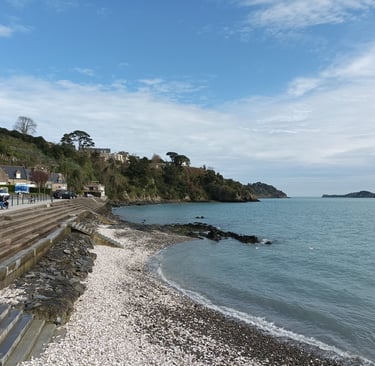

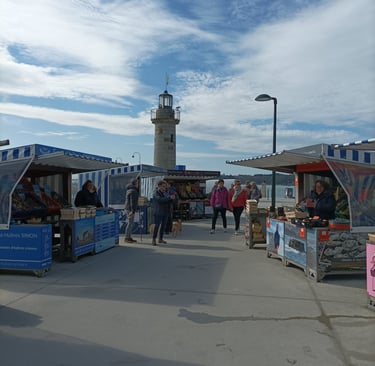
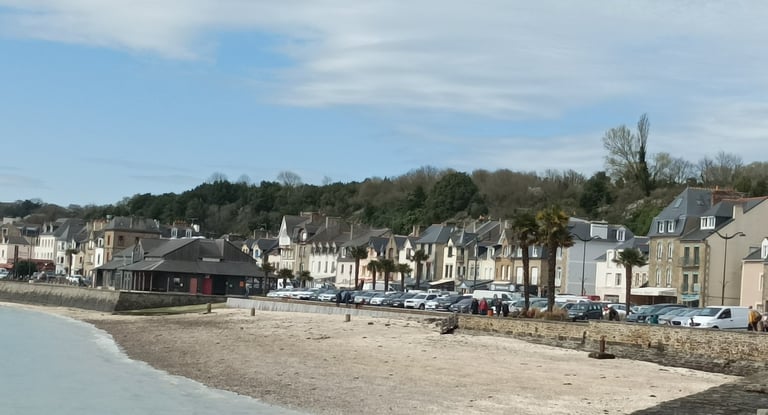





As the tide began to go out, things began to happen. Large tractors appeared in the main street towing steel boats, or trailers full of workers, and stacked high with crates . They descended the ramp to the beach to wait. Then as the tide continued to recede all was revealed. The shores round Cancale are filled with oyster beds where the young oysters are contained in large sacks or 'pockets,' and laid out on iron tables. The area of oyster tables ahead of us was vast, and we watched as even more tractors arrived and headed out across the sands. The tiny oysters will take up to three years to develop fully.
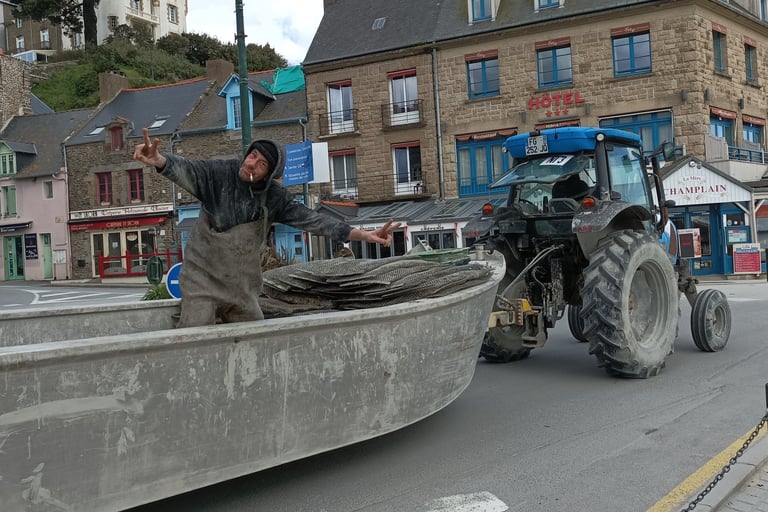



Workers arrive
As the tide goes out, the oyster beds are revealed.
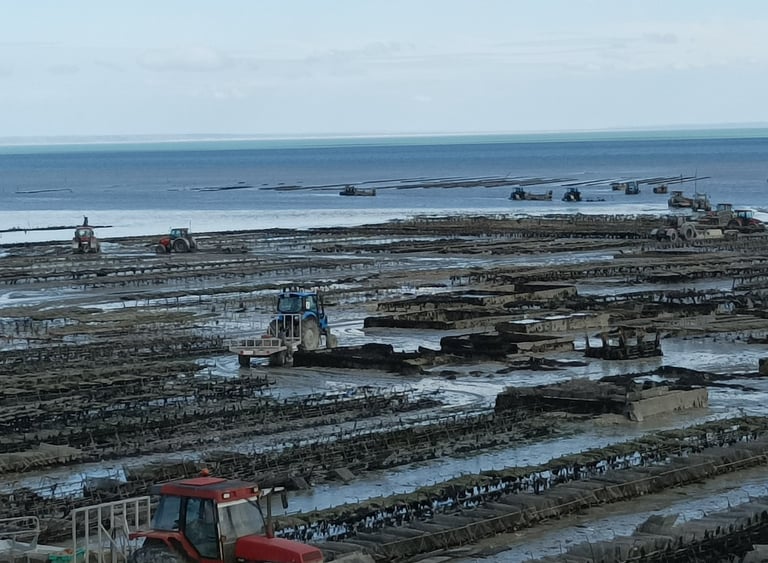


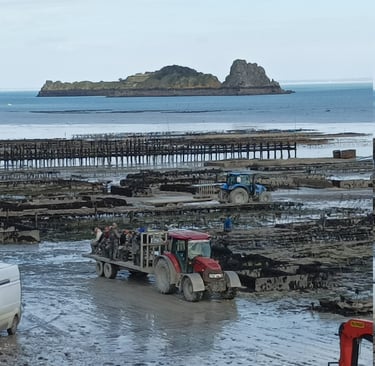
The Cancale oyster industry is huge, but unlike our local round variety, these oysters are flat. And how does the taste compare? Well they were certainly delicious, but of course, to our mind the Bouzigues oyster will always be superior!
